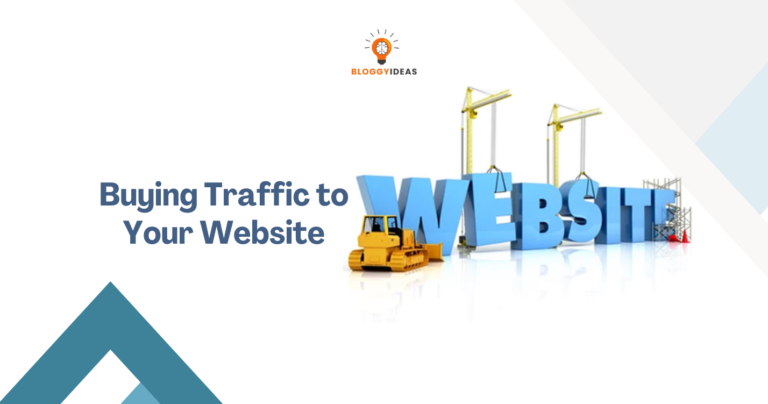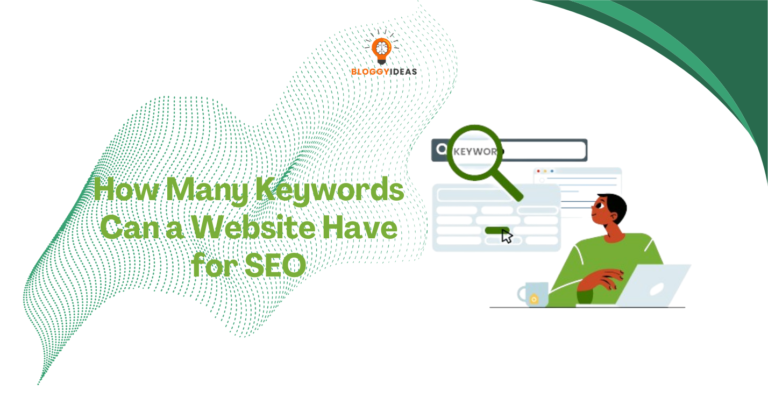15 Business Models for Startups You Should Know
“Quick Overview” As an entrepreneur, you may harbor numerous promising ideas you aspire to bring to fruition. However, it’s crucial to recognize that all your ideas could falter if not executed successfully.
Launching a startup entails significant responsibilities. You must conduct market research, devise financial plans, coordinate branding and marketing strategy, and, most importantly, select the right business model.
A well-defined and meticulously planned business model provides clarity on your value proposition, facilitates resource allocation, identifies your target market, and enables the crafting of an effective strategy, among other benefits.
In essence, a business model acts as a roadmap to success. If you’re grappling with selecting a suitable model for your startup, stay tuned to this comprehensive guide as we explore 15 types of business models and determine which one best aligns with your products or services and goals.
What is a Business Model
The business model concept illuminates how a startup or organization intends to create, deliver, and capture value. Essentially, it delineates the business operations, revenue generation, and market relevance strategies.
Importance of Choosing the Right Business Model for Startups
Now, you may be wondering why identifying the right model is crucial. The market offers a plethora of business models, yet selecting one blindly isn’t advisable. Each startup requires a model tailored to its specific needs, designed to make a significant impact within its market.
Align with a Value Proposition
Each business possesses a distinct Unique Selling Proposition (USP) to offer, and an effective method to showcase it is by selecting an appropriate model. A clearly defined model guarantees consistency in your offerings and deliverables. This clarity also provides customers with an understanding of what to expect from your business.
For example, when customers receive the anticipated value, it results in satisfaction, credibility, retention, repeat business, and acquisition.
Revenue Generation
Selecting a suitable business model enables startups to forecast the overall value they will generate over time. For instance, if your startup focuses on providing insights into global events, opting for a subscription model can be lucrative.
You can offer readers access to articles up to a certain point, requiring a subscription fee to continue reading. Alternatively, the freemium model allows readers to access a limited number of articles for free, requiring a subscription for full access.
Your choice between these models will impact estimated revenue from subscribers, but it’s crucial to consider your target audience and product before deciding on the right approach.
Competitive Advantage
Another advantage of choosing the fitted model is gaining a competitive edge. From establishing an affordable pricing range to showcasing value-added services, a suitable model can help you outshine others in the market.
For instance, suppose you and your competitor both offer a similar tool allowing potential writers, marketers, students, etc., to scan their work for plagiarism before submission.
Here’s where your business model acts as a secret weapon that outperforms your competition and secures your victory in the race. Let’s delve deeper into the example to illustrate how. Since both of you provide identical services and features, perhaps you can introduce a subscription model where visitors pay a monthly fee for unlimited usage.
This approach not only entices customers to choose you but also cultivates a community of loyal individuals who enjoy exclusive perks and discounts upon subscribing to your services.
Resource Allocation
Up to this point, we’ve explored how selecting the right business model can increase profits. However, were you aware that it can also save you a significant amount of money, time, and effort?
Your chosen business model dictates the resources required for each business activity and the investment of funds, time, and effort necessary to complete them. A thorough grasp of these factors will enhance your prospects for success.
Adaptability to Market
Market changes are unavoidable, yet they present vital opportunities for progress and enhancing customer experiences. In this ever-evolving landscape, selecting a model capable of seamlessly adjusting to shifts in customer preferences, ongoing demands, and economic conditions is essential, without requiring a complete overhaul of your business.
You might be pondering which business models possess the flexibility to meet evolving needs. Several models, such as Subscription, Freemium, Marketplace, eCommerce, Pay-per-click, etc., can be harnessed to adapt to your dynamic market.
Attracts Investors
Nearly every startup requires assistance to establish their business and navigate a smooth journey. However, securing support necessitates earning the confidence of investors and stakeholders, and one effective approach is by choosing a well-defined and compelling model capable of attracting funding and partnerships.
A concrete model demonstrates that you have conducted comprehensive research and deliberated on how your startup will achieve profitability and yield substantial returns.
Previously, we provided a clear overview of the business model and emphasized the importance of selecting the appropriate one. Next, we will delve into the distinction between the business model and the plan.
Difference Between Business Model & Business Plan
| No | Business Model | Business Plan |
| 1 | It is an idea that focuses on how a company will create, deliver & capture value. | It is a detailed plan about a company’s strategies, investments, resources, etc., required to achieve a desired goal. |
| 2 | Its focal point is the target audience, USP, revenue streams, major activities, resources, partnerships, & cost structure. | It mainly outlines details like marketing, sales, operations, financial plans & practical timelines to accomplish a target. |
| 3 | The aim is to give clarity on the functioning and sustainability of the business. | The goal is to communicate vision, mission, operations & decision-making. |
| 4 | Business models are flexible to the demands of the market & users. | Business plans are pre-determined detailed documents that cannot be changed. |
| 5 | They are often illustrated with visual representation. | They are structured with executive summary, market analysis, company description & other essential information. |
Now that you’re aware of the difference, let’s dive straight into discussing the business models.
Types of Business Models for Startup Business
Freemium Model
The freemium model refers to a business model that provides basic services for free. Users can access additional features and benefits by subscribing to a premium version, which typically requires payment of a fee. This approach is commonly employed by software applications and internet-based businesses to appeal to a wide audience. Well-known examples of this model include Spotify, Canva, Zoom, and Slack.
Subscription Business Model
The subscription business model was developed with the concept of providing customers with long-term access to a product or service for a predetermined monthly or yearly fee.
This model operates by prioritizing the generation of substantial recurring revenue upfront. Numerous companies, such as Netflix, Microsoft, Uber, and Zoomcar, adopt this model due to its predictable income stream, customer retention, scalability, and flexibility.
The subscription model is an excellent option for industries including Media & Entertainment, Health & Wellness, Education & Skill Development, Software & Technology, and many others.
Marketplace Model
The marketplace model involves a centralized platform where business owners can list and sell their products directly to customers, bypassing third-party involvement. Typically used by eCommerce businesses, this model offers significant returns with minimal risk, facilitates relevant product offerings, improves customer experience, and streamlines inventory management.
Renowned brands such as Amazon, Myntra, Shopcules, and Etsy exemplify this model.
In the marketplace model, business owners are quoted a price for selling products through the platform. There is no fixed registration fee, and each platform may charge differently. Fees are typically based on a percentage of each sale or a fixed amount covering platform services and infrastructure.
On-demand Model
The name speaks for itself. On-demand models are usually crafted to promptly deliver what customers desire, ensuring the best customer experience.
This approach is facilitated through digital platforms, with ride-sharing services like Uber and Lyft serving as prime examples of the on-demand model. Other instances include Zomato, Swiggy, Urban Company, Practo, and Capsule.
In this model, business owners register on digital platforms, granting customers immediate access to their services or products.
Virtual Good Model
The Virtual Goods Model involves trading non-physical goods within a virtual economy. For instance, in a game, you may wish to purchase outfits or food for your avatar. This is typically facilitated through in-game currencies such as coins, diamonds, or virtual money.
Unlike real-life transactions, where currency is tangible, online games operate within a digital economy where value exists solely within the game environment.
Prominent examples of this model include Fortnite, Second Life, and League of Legends.
Pay-as-you-go Business Model
Pay-as-you-go, commonly known as PAYG, entails users paying for a product or service each time they consume it. This model is highly popular among SaaS-based companies due to its flexibility, affordability, predictable costs, and global accessibility without procurement complexities.
Companies such as Amazon Web Services (AWS), Microsoft Azure, and Dropbox are prominent examples of entities leveraging this model.
Fee-for-service Business Model
A fee-for-service model is a common pricing strategy where companies charge users a specific amount to access a service or product. This model resembles the PAYG (Pay-As-You-Go) model, but with personalized services tailored to the user’s needs.
This model is typically utilized by legal, accounting, consulting, architecture, and other professional service providers, offering expert solutions to customers’ problems.
Well-known companies like McKinsey & Company, Upwork, Expedia, Lyft, and 24 Hour Fitness operate successfully using this model.
Hook & Bait Model
The concept of the “hook and bait” or “Razor and Blade” model involves enticing customers by offering core products or services at affordable rates and then providing complementary products or services at higher prices to increase profit margins. For example, Gillette sells razors at a low cost because they have long-term usage, while blades are sold at a higher price since they are bought more frequently.
Companies such as Sony PlayStation and games, Nespresso and coffee capsules, HP printers and ink, Amazon Kindle, and eBooks employ this strategy.
Reseller Model
The reseller model presents a fantastic option for entrepreneurs lacking innovative ideas yet eager to embark on their entrepreneurial journey. Essentially, a reseller entails a company or individual procuring products from third parties at discounted rates and selling them to customers at higher margins.
What makes the reseller model particularly appealing is the absence of inventory requirements or upfront investments. Instead, you simply procure goods from a third party based on customer demand and sell them directly.
From pet supplies to retail outlets, the reseller model proves effective across various industries. Noteworthy examples of this model include Best Buy, Dell, AT&T, and Walmart.
D2C Business Model
The D2C, or Direct-to-Customer, business model refers to a company providing products or services directly to its customers. With responsibilities ranging from manufacturing to promotion and beyond, businesses employing this model oversee the entire process, granting them greater control over operations and customer interactions.
Brands such as Warby Parker, Mamaearth, Sugar Cosmetics, Pee Safe, and MyGlamm utilize the D2C model.
Franchise Business Model
The franchise business model involves an individual or company acquiring a well-known franchise and managing it using their own resources and strategies. It constitutes a contractual arrangement between the franchisor and the franchisee, where the franchisor grants the franchisee permission to operate the business and earn a predetermined income through management.
Dropshipping Business Model
The dropshipping model involves a business or individual selling products online and directly delivering them to the customer’s doorstep. With this approach, there’s no need to maintain a physical store or inventory. Instead, you purchase products from a third party and have them shipped directly to the customer’s address.
AliExpress, Oberlo, and Spocket are notable examples of dropshipping platforms.
Affiliate Business Model
The Affiliate business model involves a company investing in an external entity to generate leads or traffic for their business, products, or services. Often termed as an advertising model, it serves as a pathway to reaching desired goals.
Many companies adopt this model, partnering with individuals to promote their offerings. In return, the service providers receive commissions on sales, leads, and other objectives achieved.
Examples of affiliate business models include Amazon Associates and Rakuten Advertising.
Ad-based Business Model
The ad-based business model operates by allocating space for advertisements, which individuals or companies pay for to promote their products or services on various platforms such as blogs, social media, websites, or apps.
In this model, advertisers bid for ad placement, with the highest bidder securing the space. Advertisements can take the form of banners, videos, sponsored content, pop ups, etc., and pricing varies depending on the type and placement of the ad.
Examples of companies utilizing the ad-based model include Facebook, Twitter, Snapchat, Spotify, among others. Additionally, mobile apps and online news media also function under this model.
Now that you’re familiar with this model, let’s guide you through the steps of choosing a business model.
Blockchain Business Model
Blockchain is a distributed ledger technology that enables companies and businesses to deploy their smart contracts without relying on central authorities like AWS or Digital Ocean.
Types of Blockchain Business Models:
- Token Economy or Utility Token Business Model: In this model, companies issue tokens as a mechanism to reward token miners or holders. Examples include Solana and Ethereum.
- P2P Blockchain Business Model: The peer-to-peer (P2P) blockchain allows end-users to interact directly with each other. An example is IPFS.
- Blockchain As A Service Business Model (BaaS): BaaS involves providing ecosystem services similar to Microsoft (Azure) and Amazon (AWS) but within the web 3 space. Examples include Bitcoin and Ethereum, such as Ethereum Blockchain as a Service (EBaaS).
- Blockchain-Based Aggregators: Similar to AWS for blockchain, this model enables users to make API calls for their preferred blockchain and utilize the service. An example is Alchemy, which serves as a node provider for various blockchains.
Factors to Consider for Choosing a Business Model for a Startup Business
Study Your Market
Thorough research is crucial prior to selecting a suitable business model. It entails examining the current market landscape, understanding your audience’s needs, identifying their pain points, and studying your competitors along with their strategies and chosen models. Analyzing these aspects serves as the initial step toward grasping what truly drives success in your industry.
Know Your Offerings
Numerous startups make the error of choosing a business model based solely on its advantages. However, it’s crucial for you to weigh your offerings, budget, scalability, and sustainability. Thoughtfully considering these factors will assist you in selecting the appropriate model and comprehending its performance in the market.
Identify Monetization Strategies
Then, it’s crucial to pinpoint your monetization strategies. The market offers a plethora of options, including selling products, subscription services, advertising, premium service charges, pay-per-use models, affiliate marketing, and beyond.
However, it’s impractical to adopt them all or select randomly. Your choice should align with your target audience, competitive environment, product nature, and business objectives.
Thoroughly assess each aspect and settle on a strategy. Continuously monitor its effectiveness and gather user feedback to make necessary adjustments, refining your approach.
Take Scalability Into Account
Simply replacing a model due to projected future demand isn’t always practical. Instead, opt for a model capable of accommodating growth seamlessly. Evaluate whether your operations, resources, and processes can scale effectively as your network expands. This ensures your business remains robust without constraints in the future.
Remember, there’s no one-size-fits-all solution. While certain models excel for some businesses, they may prove ineffective for yours. It’s vital to choose a strategy tailored to your needs, target market, and objectives. If you’re still uncertain, seeking expert advice is always wise.
Frequently Asked Questions
1. Are There Specific Business Models More Successful for Startups?
There isn’t one model superior to others. As mentioned earlier, certain models suit particular businesses but not necessarily others. It’s essential to select a model aligned with your goals, business, and user needs.
2. How Do I Evaluate the Feasibility of a Model for a Startup?
Begin by assessing how the model can enhance your product or service’s value. Additionally, examine your market, target audience requirements, scalability, and associated risks. If the model aligns with these factors and promises profitable growth, it’s likely suitable for you.
3. How Crucial Is Scalability When Considering a Startup’s Business Model?
Choosing a scalable model enables efficient business handling, avoidance of potential obstacles, and consistent profitability. Its scalability allows leveraging growth as your business expands.
4. Can I Blend Multiple Business Models for My Startup, or Should I Concentrate on One?
Wearing too many hats isn’t advisable. Instead, focus on selecting the optimal model delivering productive outcomes for your business.
Conclusion
Thus far, we’ve provided you with an overview of various business models, their types, distinctions, and key considerations before making a decision. We trust that the information shared in the blog assists you in finalizing your choice.
Initially, the process may feel daunting, but ultimately, it’s about carefully considering the factors to streamline the decision-making process.
Related Resources:







